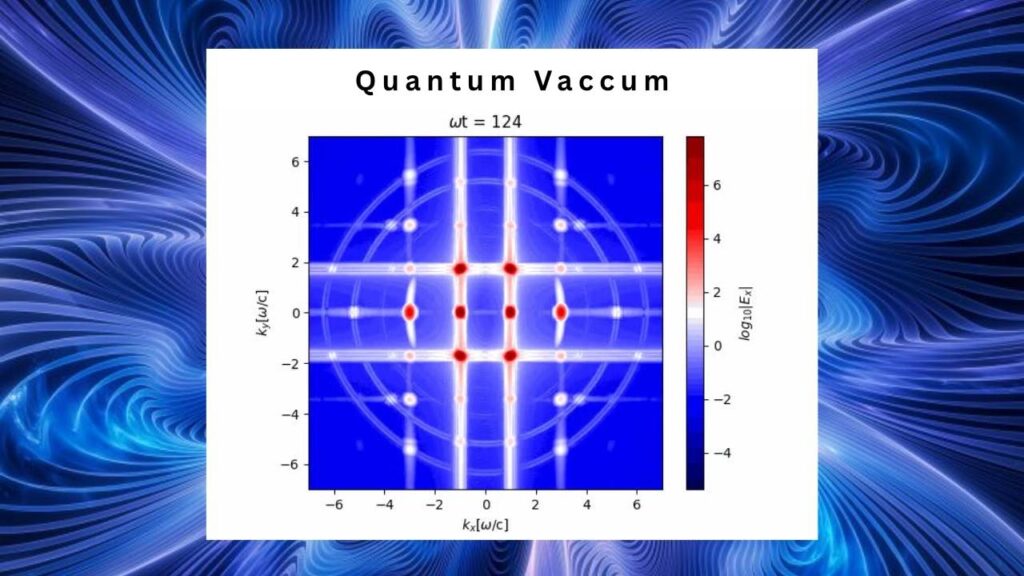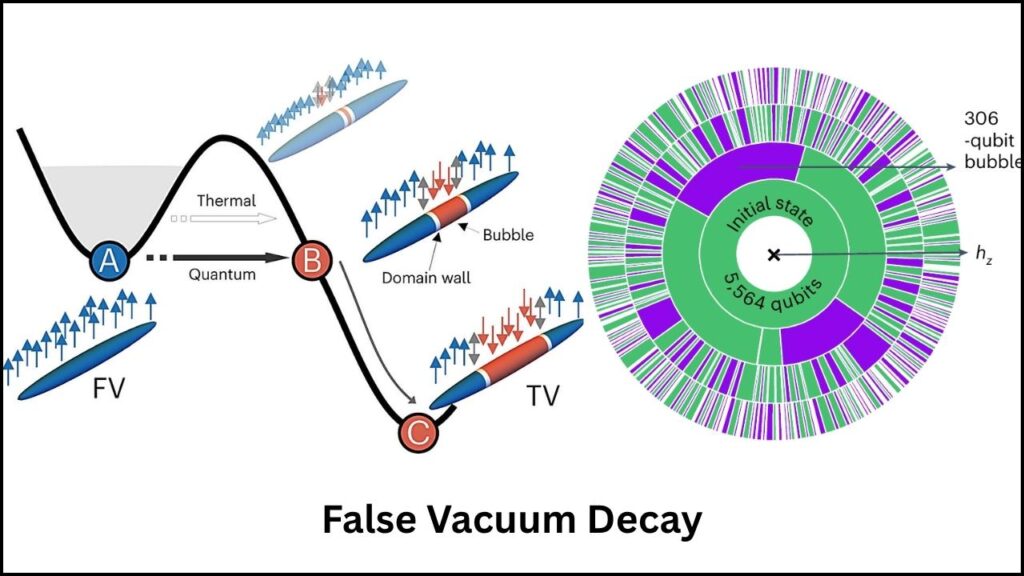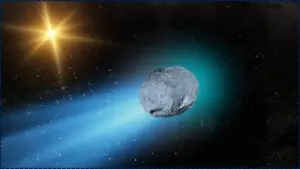Physicists Recreate Extreme Quantum Vacuum Conditions in the Lab: Physicists have recreated extreme quantum vacuum conditions in the laboratory, an extraordinary achievement that opens a new frontier in particle physics and cosmology. This breakthrough allows scientists to experimentally study quantum vacuum phenomena — once believed to be purely theoretical or accessible only in cosmic settings — using controlled laboratory environments. From witnessing false vacuum decay to generating matter from “empty” space, these advances deepen our understanding of the universe’s fundamental structure and quantum field behavior.

This article explains these complex concepts in a clear, conversational style while providing detailed insights, accurate data, and practical implications. Whether you are a curious student, science enthusiast, or professional physicist, you’ll gain a solid grasp of why simulating extreme quantum vacuum states is a major milestone in modern physics.
Table of Contents
Physicists Recreate Extreme Quantum Vacuum Conditions in the Lab
| Feature | Details |
|---|---|
| Topic | Recreating extreme quantum vacuum conditions in laboratory settings |
| Significance | First experimental observation of false vacuum decay and matter creation from vacuum |
| Core Experiments | Ferromagnetic superfluid bubble formation, quantum annealer simulations, graphene-based Schwinger effect |
| Quantum Computing Role | Use of a 5,564-qubit quantum annealer to model vacuum dynamics beyond classical computing |
| Black Hole Analogues | Quantum vortices in superfluid helium mimic curved spacetime and event horizon physics |
| Practical Applications | Advances in quantum technologies, cosmology, materials science, and energy research |
| Reliable Sources | Physics World, Phys.org, SciTechDaily, Earth.com |
The recreation of extreme quantum vacuum conditions in laboratories heralds a new era in particle physics and cosmology. Through sophisticated experiments and quantum simulations, physicists are no longer confined to theoretical predictions or cosmic observations — they can now test and observe quantum vacuum phenomena directly.
This progress is not just an academic milestone but a foundation for future technological innovations and a deeper understanding of our universe’s origins and behavior. The bridge between the infinitely small quantum world and the vast cosmos is narrowing, promising exciting discoveries ahead.
Understanding the Quantum Vacuum: Beyond “Empty Space”

At first glance, a vacuum suggests emptiness — a void where nothing exists. Yet, modern quantum physics reveals a far more intricate picture. The quantum vacuum is the lowest-energy state of a quantum field but is far from “nothing.” Due to the Heisenberg uncertainty principle, energy and particles can spontaneously appear and vanish even in a vacuum, known as vacuum fluctuations.
These fluctuations create virtual particles, ephemeral entities that pop in and out of existence within incredibly short timescales. Despite their brief lifespan, they have measurable effects — for example, the Casimir effect, where two metal plates in a vacuum attract due to quantum fluctuations.
The quantum vacuum is a dynamic stage upon which the universe’s forces and particles interact. Understanding it is essential for uncovering mysteries like dark energy, cosmic inflation, and the origin of mass.
False Vacuum Decay: Experimentally Observing a Cosmic Phenomenon

What Is a False Vacuum?
A false vacuum is a metastable quantum state — it looks stable but isn’t the lowest energy configuration possible. The system can transition to a true vacuum state, releasing energy in the process.
In cosmology, the early universe might have existed in such a false vacuum state before rapidly decaying to the true vacuum, causing cosmic inflation — a period of exponential expansion.
Laboratory Recreation Using Ferromagnetic Superfluid
Physicists at Washington University in St. Louis have experimentally recreated this false vacuum decay using ultracold sodium atoms cooled to near absolute zero (-273.15°C).
At these temperatures, sodium atoms enter a ferromagnetic superfluid phase, where the entire system behaves quantum mechanically with collective spin properties. In this setup, spontaneous formation of bubbles of true vacuum was observed within the false vacuum background, precisely mimicking theoretical models.
This is the first direct observation of false vacuum decay in a lab, validating decades of quantum field theory and cosmological predictions.
Quantum Simulations: Leveraging Cutting-Edge Quantum Computing
Simulating vacuum decay and quantum field interactions requires immense computational power, far beyond classical computers.

Using a 5,564-Qubit Quantum Annealer
Researchers at Los Alamos National Laboratory employed a D-Wave quantum annealer with over 5,500 qubits to simulate false vacuum decay dynamics.
The quantum annealer models complex quantum systems by finding low-energy configurations, effectively simulating how true vacuum bubbles nucleate, grow, and collide in a false vacuum background.
These simulations not only deepen theoretical understanding but also allow physicists to explore quantum phenomena such as vacuum tunneling, which are impossible to model accurately with classical algorithms.
Black Hole Analogues: Studying Extreme Gravity Effects in the Lab
Understanding the behavior of quantum fields in curved spacetime — near black holes or other massive objects — is fundamental for uniting quantum mechanics with general relativity.
Creating a “Quantum Tornado” in Superfluid Helium
Researchers have generated a quantum vortex inside superfluid helium, a state where the fluid flows without friction.
This vortex behaves like a rotating black hole, allowing scientists to observe how quantum particles and fields react to the analogue of frame dragging and event horizons.
This approach provides a safe, controllable way to test theories about Hawking radiation and the interface between gravity and quantum mechanics, which otherwise requires astronomical observation.
Matter from Vacuum: The Schwinger Effect Demonstrated in Graphene
The Schwinger Effect Explained
Predicted in the 1950s by Julian Schwinger, this effect describes how a sufficiently strong electric field can produce real particle-antiparticle pairs from vacuum fluctuations — effectively creating matter from “nothing.”
Experimental Confirmation Using Graphene
Scientists utilized graphene’s unique electronic properties to generate extreme electric fields. This triggered the creation of electron-positron pairs, confirming the Schwinger effect in a laboratory setting for the first time.
The experiment, reported by SciTechDaily, confirms key quantum electrodynamics predictions and opens pathways to new quantum devices that harness vacuum energy.
Practical Implications and Future Directions
Advancing Fundamental Physics
These experiments validate and extend our understanding of quantum field theory, cosmology, and particle physics beyond theoretical conjecture.
Laboratory-accessible quantum vacuum phenomena allow physicists to test models that explain the universe’s birth, expansion, and structure in unprecedented detail.
Quantum Technology Innovations
Understanding and manipulating quantum vacuum effects are crucial for advancing:
- Quantum computers, which rely on controlling quantum states with minimal decoherence.
- Quantum sensors that exploit vacuum fluctuations for ultra-sensitive measurements.
- Next-generation materials with engineered quantum properties.
Energy and Cosmology Research
While practical energy extraction from vacuum fluctuations remains speculative, exploring phenomena like the Schwinger effect could one day inform novel clean energy technologies or particle generation methods.
Step-by-Step Guide to Understanding Quantum Vacuum Experiments
Step 1: Understand Vacuum as a Quantum Field
- Recognize vacuum is a fluctuating field with virtual particles.
- Accept that “empty space” is a dynamic medium, not nothingness.
Step 2: Explore the Concept of False Vacuum
- Learn the difference between false and true vacuum states.
- Understand metastability and quantum tunneling concepts.
Step 3: Review Experimental Analogues
- Study ultracold atom setups mimicking false vacuum decay.
- Understand quantum annealer simulations for vacuum dynamics.
- Examine superfluid vortices simulating black holes.
Step 4: Connect Theory and Application
- See how experiments confirm quantum field theory.
- Consider implications for quantum computing and materials.
CareCloud to Present on AI Innovation at Maxim Group’s 2025 Virtual Tech Conference
Microsoft Cuts 300 More Jobs, Extending Largest Layoffs in Years
AI Linked To Fourfold Increase In Productivity Growth And 56% Wage Premium
FAQs About Physicists Recreate Extreme Quantum Vacuum Conditions in the Lab
What does “quantum vacuum” mean?
The quantum vacuum is the lowest energy state of space, full of fluctuating energy fields that can create particles momentarily, unlike classical empty space.
How do physicists recreate cosmic conditions in labs?
They use ultracold atoms, superfluids, graphene, and quantum computers to mimic extreme conditions such as false vacuum decay or black hole analogues.
Why is false vacuum decay important?
It provides insights into early universe dynamics, including the inflationary phase responsible for the large-scale structure of the cosmos.
Can these experiments affect everyday technology?
Yes. They enhance understanding necessary for quantum computing, precision sensors, and advanced materials development.



















